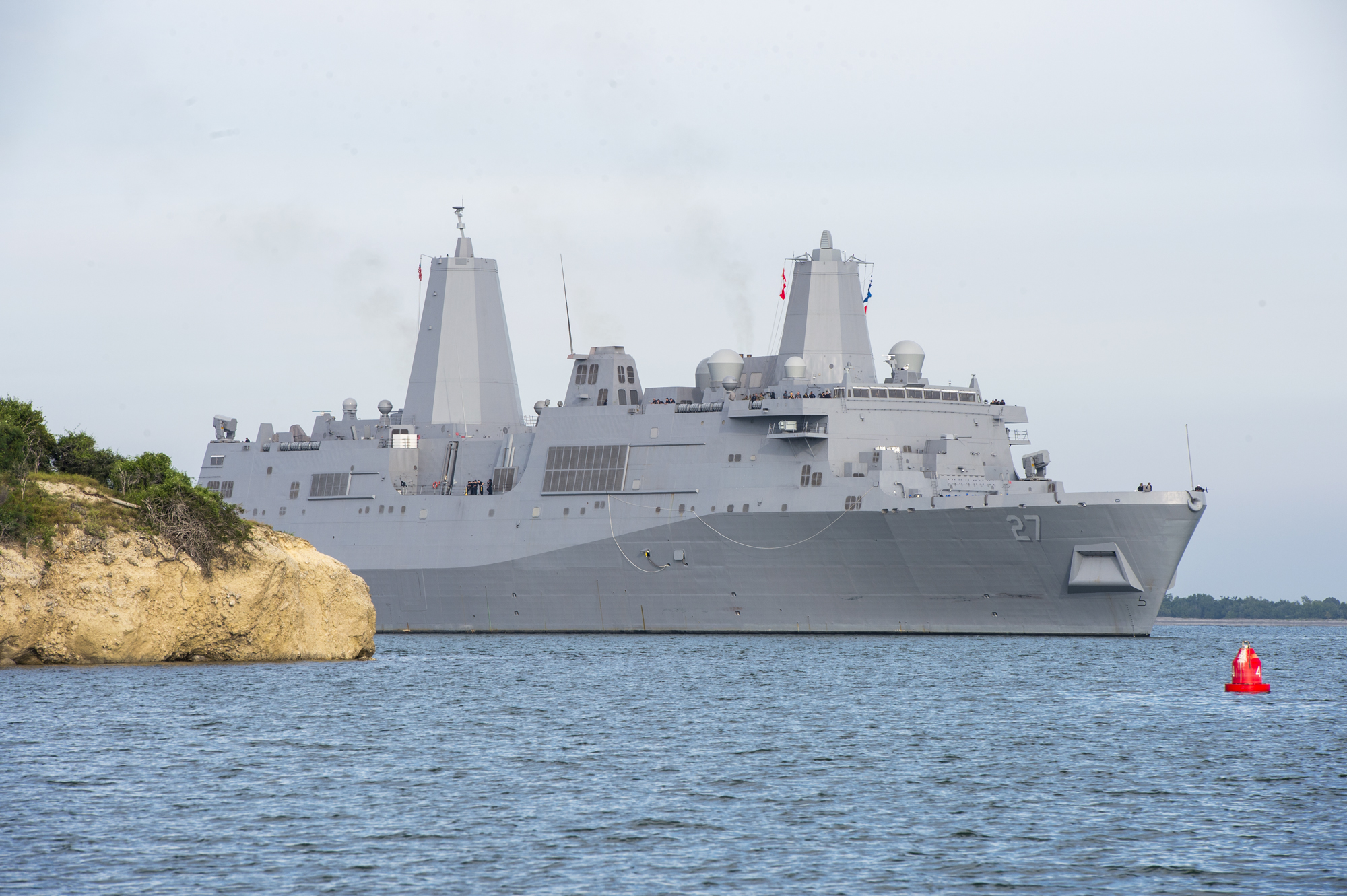
ARLINGTON, Va. — Amphibious warship Portland (LPD-27) was tapped to host a laser weapon technology demonstration by the Office of Naval Research (ONR) and to serve as the flagship of this year’s Rim of the Pacific (RIMPAC) exercise in Hawaii.
The new amphib, currently en route to San Diego and set for commissioning in April, will host a laser gun that is considered a next-generation follow-on to the Laser Weapon System (LaWS) that was tested for three years in the Middle East aboard afloat forward staging base USS Ponce (AFSB(I)-15), LPD-17 and LHA Program Manager Capt. Brian Metcalf said.
Speaking at a briefing at the Surface Navy Association’s annual symposium, Metcalf said the laser will be installed as early as this fall and will be a bolt-on capability, much like LaWS.
“It’s going to fit into what was originally the [Vertical Launching System] reservation on the ship. So they’ve got what I will call power modules that control the laser that will just fit in those open and reserve weight spaces, and then the laser itself gets just bolted on to the deck,” Metcalf said.
“Just like Ponce, it’s kind of a bolt-on – it’s not going to be integrated into the warfare system, it won’t be providing tracking data or classification data. It’s a technology demonstrator, is what it is. So because of that, there are no plans in the baseline for (follow-on LPDs) 28 or 29 to add that.”
The tech demonstration is meant to test improvements made to the laser itself, not anything related to the ship or shipboard integration, and Metcalf said he wasn’t well-versed in the specifications of the new laser.
He did say that Portland was chosen after a series of ship checks selected the LPD class over the Arleigh Burke-class destroyers (DDG-51) or amphibious assault ships after looking at cooling, power, air conditioning, space and weight margins and other factors. Portland specifically was chosen within the LPD class due to schedule and availability.

Asked how long the tech demonstration might last, Metcalf replied, “if you had asked this question five or six years ago, how long is that laser going to be on Ponce, no one would have guessed that the ship would stay over there (in U.S. 5th Fleet) as long as it did, the laser would stay on as long as it did. My guess is if this works and we like it, it’s going to be there for a while. The ship’s going to go use the thing, and then we’ll start talking about how do you make this part of the ship’s total ship systems. But for now it’s a bolt-on, it’s designed to be a temporary thing.”
He added, though, “right now, I am not making a plan to take it off.”
Portland also had the honor of being tapped by U.S. 3rd Fleet as the flagship of this year’s RIMPAC international maritime exercise in Hawaii. Metcalf said the amphib will go to its commissioning ceremony in Portland, Ore., in April and then will conduct its combat system trials in Pearl Harbor. The ship will spend several more weeks there to participate in RIMPAC before heading back to San Diego.
Metcalf told USNI News after his briefing that his office is currently looking at ways to make the ship more capable ahead of RIMPAC. The current schedule has Portland going through a Fitting Out Availability before RIMPAC but not conducting Post-Shakedown Availability until afterwards. Though the FOA is much shorter, the program office is looking at work items that could be moved up to give the warship the greatest capability possible before the international exercise.
“There are a couple things that we know that were put in the PSA bucket that we would pull forward. CENTRIXS is one of them, it’s a capability that we wouldn’t necessarily upgrade until later but we would want it to be as current as possible,” he said. CENTRIXS is a secure communications channel that allows coalition ships to share information – a must-have during RIMPAC, the world’s largest maritime exercise.





